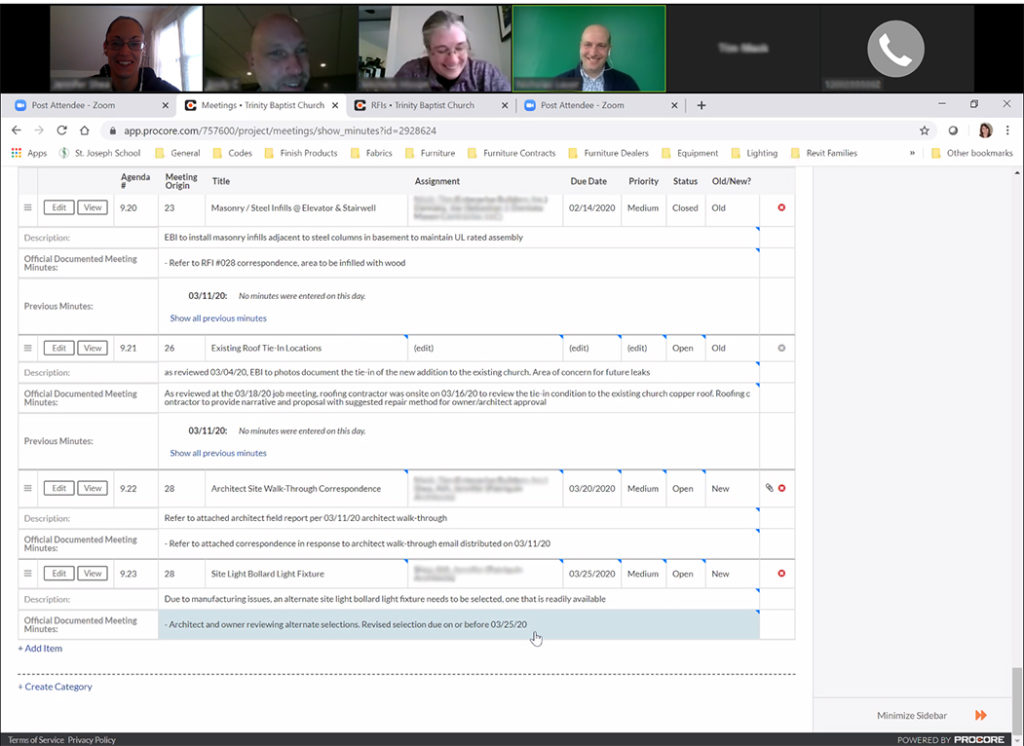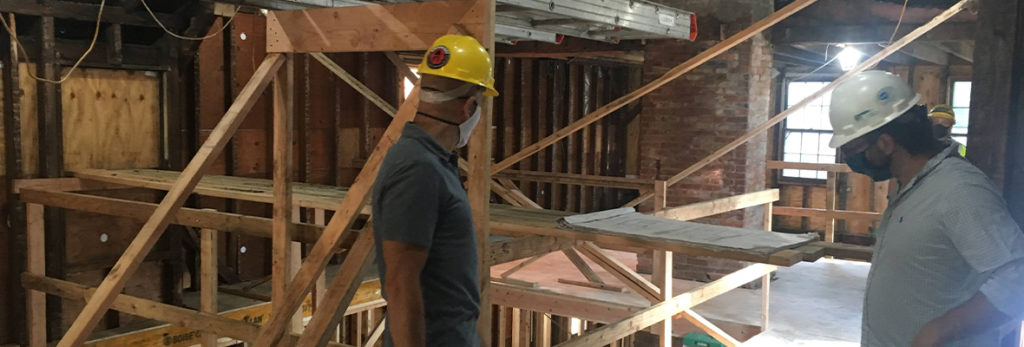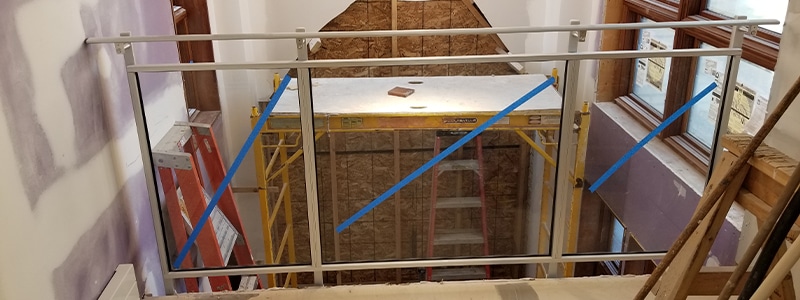The COVID-19 pandemic has shaken many industries, with some coming to a complete standstill in an attempt to slow the spread of the virus. Fortunately, most construction companies have been able to continue their work. However, there are crucial steps that must be taken to ensure construction workers, property owners, and service providers all remain safe.
At Patriquin Architects, we currently have multiple projects under way. Consequently, we fully understand the precautions that must be taken and how clients can expect construction initiatives to be different today than before COVID-19.
OAC Meetings: Taking a New Approach to Keep One Another Safe
One aspect of construction projects that is now noticeably different is owner-architect-contractor (OAC) meetings. Pre-pandemic, these gatherings typically took place weekly or bi-weekly at the construction site. They involved a walk-through of the site to review completed and ongoing work, discuss the status of paperwork, troubleshoot any issues that had come up since the last meeting, discuss near- and longer-term scheduling, and review possible changes in the proposed work.
Today, in order to minimize exposure and risk, we break these meetings into two parts. First, the architect and contractor only walk through the site in the early morning or late afternoon, when there are fewer people around. Photos and videos are taken for use in the second part of the meeting—a virtual session that includes all necessary stakeholders. In this way, important visual inspections and discussions of the findings can still take place, but with significantly less in-person interaction.
Caution Around Construction Sites
In addition to changes in OAC meetings, the way work is done on job sites has been modified as well. For example, construction companies are having employees practice social distancing whenever possible, especially in enclosed spaces. In some cases, this means having fewer of the trades involved on-site at one time. Employees are also required to wear masks when appropriate.
In addition, companies are minimizing the use of trailers on worksites, or only allowing one employee at a time to be in each of the offices in a trailer. And to ensure that these rules are understood and followed, most companies have carefully documented and trained teams on them.
New Considerations for Clients
Clients that launch or continue a construction project today should be aware of changes to what they’re used to. One of these differences involves the availability of materials. COVID-19 has had a negative impact on the manufacturing and shipping of certain types of items, resulting in sometimes lengthy delays in receiving them.
Also, with many companies striving to have fewer employees on-site at a given time, schedules are being extended. Plus, inspections and regulatory permitting at rough-in, completion, and other milestones are taking longer than usual, often because municipalities have cut back on staffing. These and other factors should be anticipated as potential sources of project delays.
Being Proactive Is More Important Now Than Ever Before
Proper planning is essential to success in construction even in the best of circumstances. With the coronavirus pandemic affecting many different aspects of a project, being proactive is now more important than ever. This includes everything from ordering materials and scheduling inspections with plenty of lead time, to finding ways to maximize the productivity of workers while also ensuring their safety.
However, there’s no reason to cancel or postpone construction projects. With a little extra forethought and patience, work can continue. And that’s good news for everyone involved: architects, contractors, owners, and the end-users of new or remodeled buildings.
If you’re considering starting a construction project and have questions or concerns, please contact us at your convenience. We’re happy to share our perspective on life and work in the wake of COVID-19. You can also learn about the projects we’ve completed in our online portfolio.



